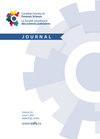Modeling human movement and mechanics: thoracic cage
IF 0.5
Q4 MEDICINE, LEGAL
Canadian Society of Forensic Science Journal
Pub Date : 2022-08-20
DOI:10.1080/00085030.2022.2104562
引用次数: 0
Abstract
Abstract Computer-generated models have revolutionized how reconstructions of violent events, such as police use of force, are both performed and visualized. Yet, many experts in the legal and forensic disciplines do not understand them at a level required to use them effectively or create credible arguments supporting their findings. Simply put, models are a simplification of reality. Hence, models permit human programmers to specify the simplified behavior of a system. Since model parameters dictate the system's behavior, the programmer must document and provide justification for the selection of model parameters. The model structure, together with the selected parameters, form the backbone supporting the forensic investigator’s conclusions. This paper will begin with an overview of the usefulness of models in forensic investigations and follow with an example of how a model is constructed and applied in use of force cases. The selected cases are particularly relevant to incidents commonly encountered in law enforcement, frequently leading to litigation.人体运动和力学建模:胸廓
计算机生成的模型已经彻底改变了暴力事件(如警察使用武力)的重建方式和可视化方式。然而,法律和法医学科的许多专家对它们的了解程度不足以有效地使用它们或提出支持其发现的可信论点。简单地说,模型是对现实的简化。因此,模型允许人类程序员指定系统的简化行为。因为模型参数决定了系统的行为,所以程序员必须记录并提供模型参数选择的理由。模型结构与所选择的参数一起构成了支持法医调查员结论的支柱。本文将首先概述模型在法医调查中的有用性,然后举例说明如何构建模型并将其应用于使用武力的案件。所选个案与执法中经常遇到的事件特别相关,经常导致诉讼。
本文章由计算机程序翻译,如有差异,请以英文原文为准。
求助全文
约1分钟内获得全文
求助全文

 求助内容:
求助内容: 应助结果提醒方式:
应助结果提醒方式:


